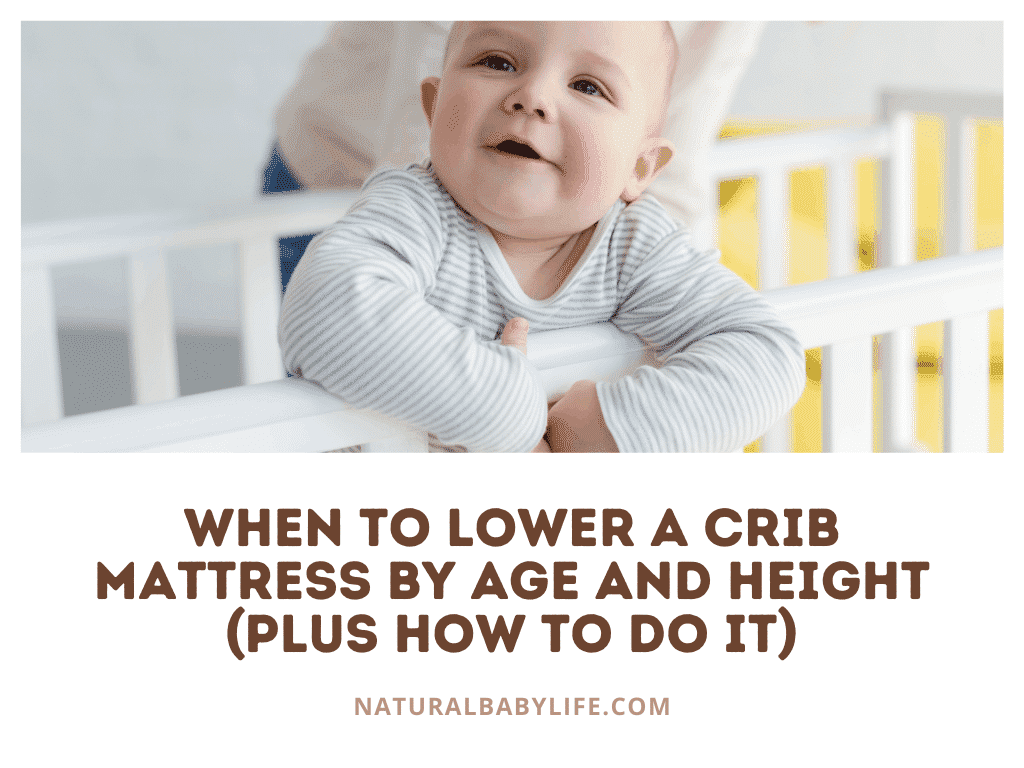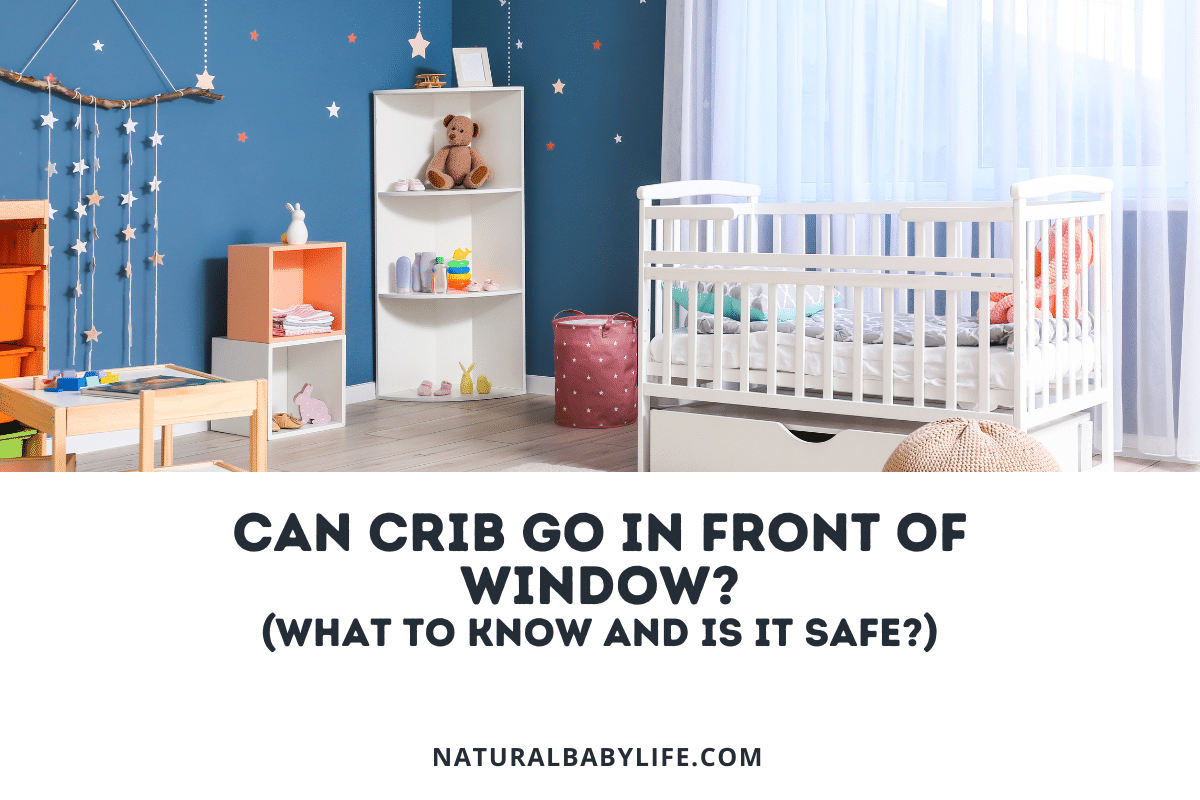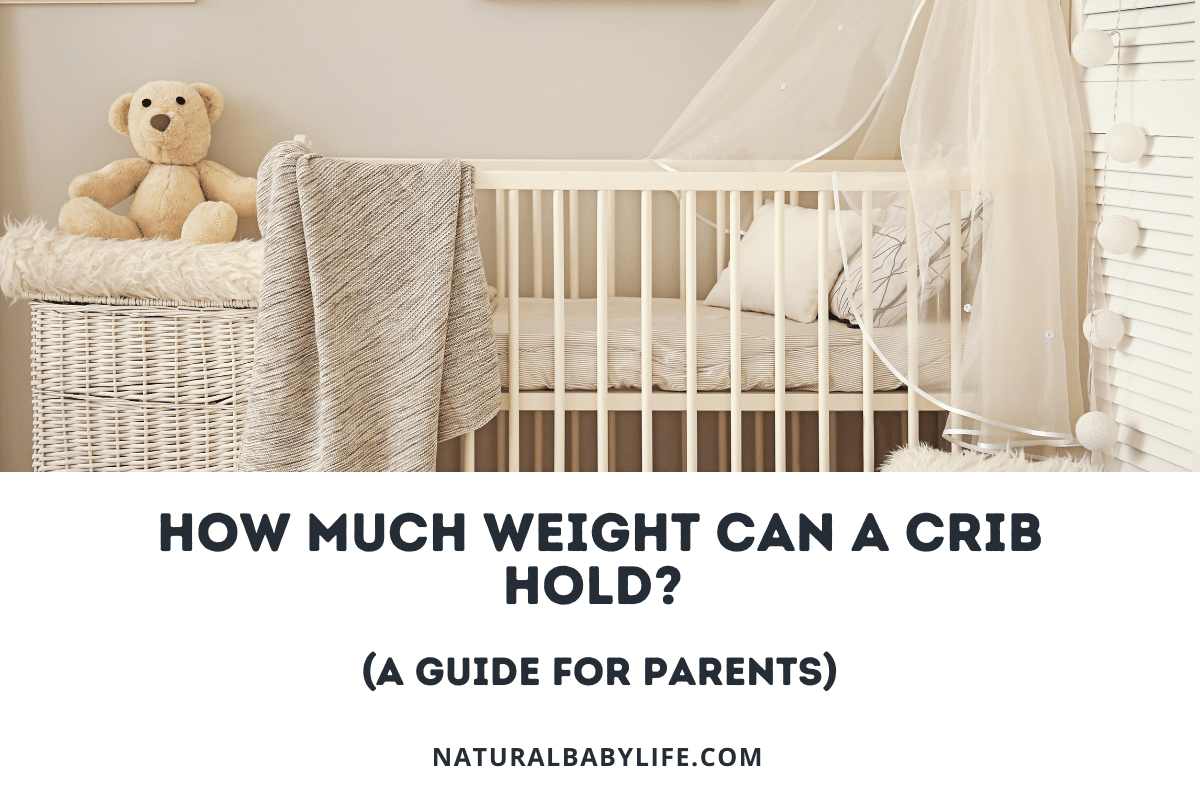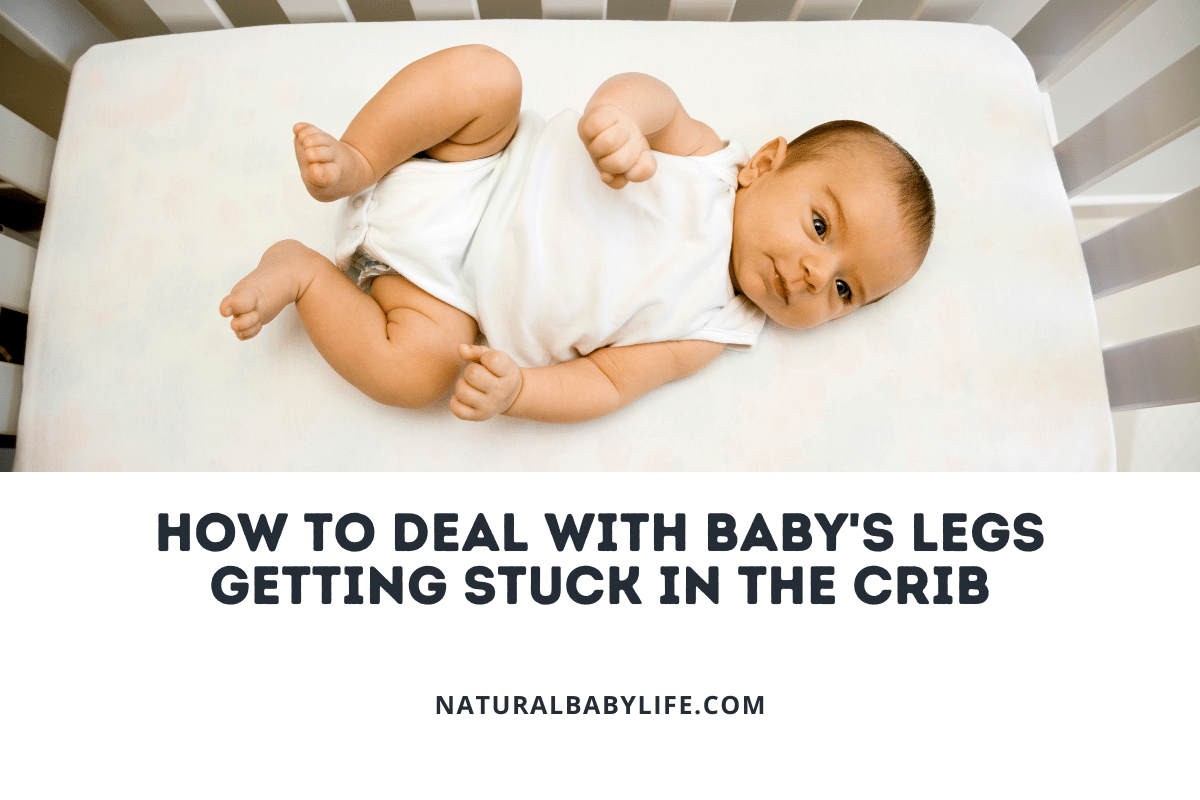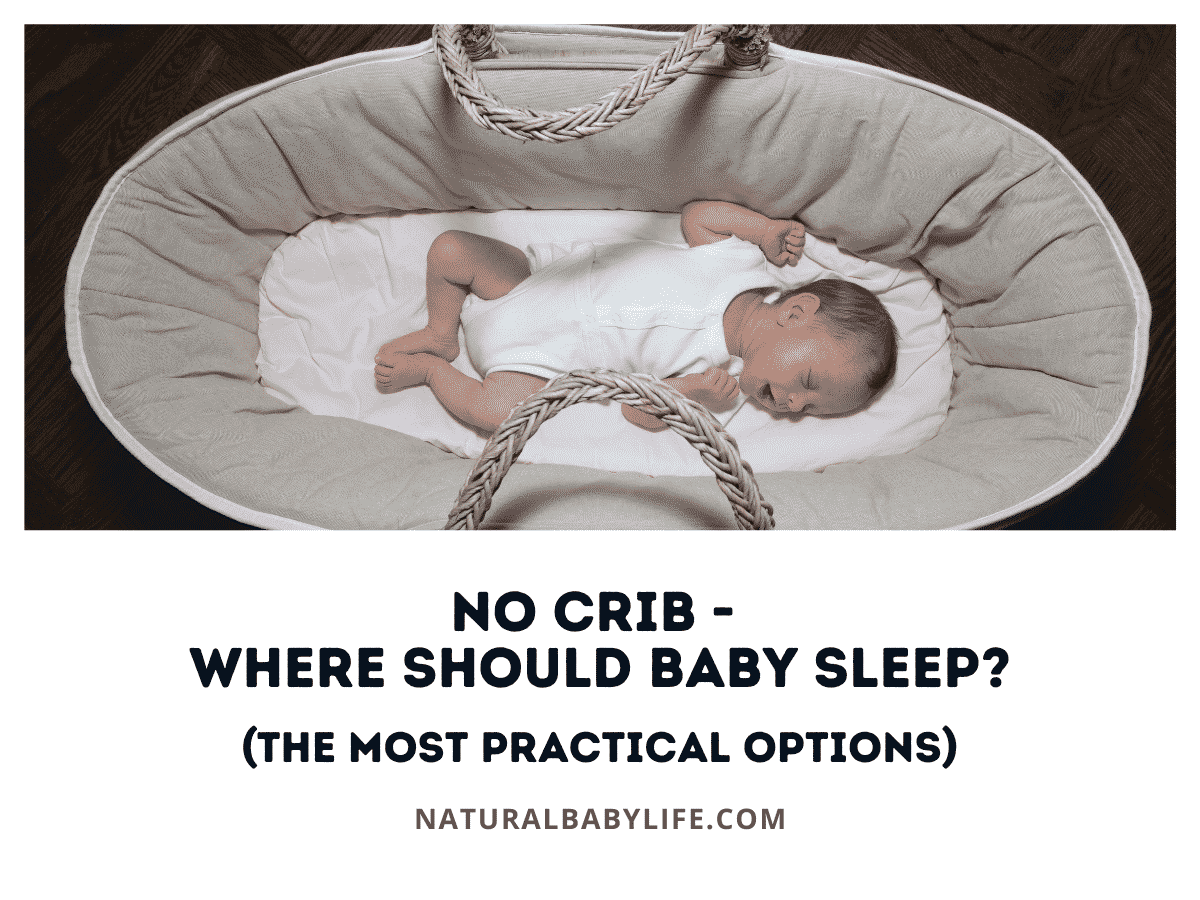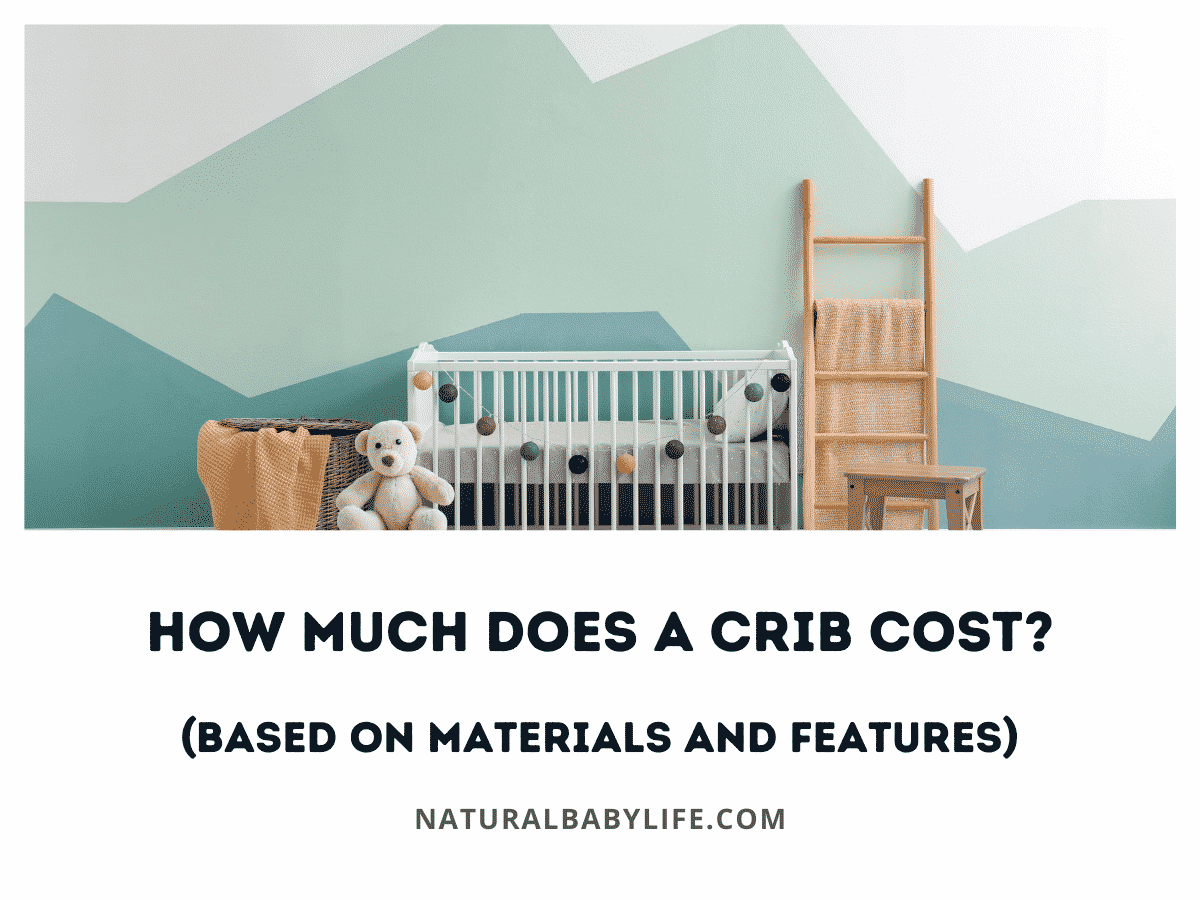After the crib is assembled and your baby is sleeping safely in it, it may feel like your work is done, but it is only just beginning. As he grows, you will need to monitor your baby’s development and adjust the height of the mattress at key stages in order to ensure his safety and your own comfort.
It is in both your and your baby’s best interest to know when it is time to adjust the crib mattress height. Keep reading to find out what milestones to watch for, the general age that your child is likely to be when it is time to adjust the mattress level, and an overview of how to do it.
Table of Contents
Why crib mattress height matters
Of all the furniture, toys, and accessories you will buy for your baby, one of the most important purchases you will make is the crib. When you choose a crib, you envision what color and design will work best in your nursery, research safety ratings, decide if you want a standard crib, one that will convert into a toddler bed, or even one that will grow with your child all the way up to a twin bed.
Next you buy a crib mattress, which requires even more research. Then you have to assemble everything! Finally, you are ready to top it all off with the cutest pink, blue, or gray fitted sheet and lay your sweet little baby down, safe in the knowledge that you’ve done everything you can to make the crib safe and comfortable.
Although it may be a sweet idea to consider putting your baby in someone special’s old crib, you should probably just say thanks-but-no-thanks to the offer. Today, the regulations surrounding crib safety are stricter than they have ever been, and that kind gesture could be a safety hazard in disguise.
In 2011, the American Academy of Pediatrics’ journal published an extensive study based on nineteen years of research (1990-2008) regarding injuries from playpens, bassinets, and cribs.
Of the more than 180,000 injuries recorded, more than 83% of them involved cribs, and 66% of the overall injuries were the result of falls. Although most of the reported injuries were comparatively minor, 150-200 children under the age of two died as a result of these injuries each year. The study concluded with an official recommendation that changes needed to be made to increase the overall safety of the products, as well as to improve the everyday use and general awareness of potential dangers of them.
Within just a few months, the U.S. Consumer Product Safety Commission (CPSC) updated the safety regulations for cribs.
The new requirements for crib standards and heights included:
- standardized crib and mattress sizes to ensure the mattress fits snugly, as well as a required sticker denoting the size of the correct mattress;
- a maximum 2⅜” gap between the slats or poles so the baby cannot get his legs through and caught;
- updated quality standard, such as no splinters, sharp edges, or potentially dangerous hardware;
- clear and detailed assembly instructions; and
- a rail height of 26” from the top of the rail to the lowest level of the mattress support, plus a warning statement that children more than 35” tall should be moved into a larger bed.
If you have purchased a new crib recently, it will meet all of these requirements, but you are still need to be aware of any recalls, best safety practices, and when to lower your child’s mattress to avoid the risk of falls.
Typically a crib is assembled with the mattress at the highest setting, which is both convenient for the parents who are trying to lower a sleeping baby and safe for a baby who cannot yet rollover. As your baby is able to sit up, you will want to lower the mattress, and it will need to be at its lowest placement once he is able to start standing up.
With that being said, let’s get into some more details!
Common crib mattress height settings
Most cribs have between two and four height settings.
By law, the lowest crib setting has to be 26” from the top of the railing, and the uppermost setting cannot be less than 9” from the top of the railing. Beyond that, the mattress height settings are up to the manufacturer.
In the most common three-level variations, each level will be 3-5 inches above the lower one with the lowest being 26” below the top of the railing.
Crib mattress height by age and developmental milestones
| Highest mattress setting | Middle mattress setting | Lowest Mattress setting | Toddler Bed | |
|---|---|---|---|---|
| Typical age of child | Newborns under 5 months | Babies 5 to 8 months old | Babies between 9 months and around 18 months | Babies and toddlers between 18 months and several years old |
| Developmental milestones | Unable to push up or roll on their own | Babies that can push up on knees, roll over or sit up on their own | Babies have shown signs of pulling up on their own | Older babies and toddlers that are over 35 inches tall or are capable of climbing |
| Crib height from mattress support to crib railing | At least 9 inches | Between 9-26 inches | 26 inches | No standard (lower is typically better) |
Do all cribs have adjustable mattress heights?
If you are purchasing a standard full-size crib, you would be hard-pressed to find a mainstream option that does not include at least two mattress height levels.
If, however, you have chosen a mini crib or a travel option, it is possible that you could choose a crib with only one level. In this case, it will be 26” from the top of the railing in order to safely accommodate a child up to 35” in height.
When to lower the crib mattress
It is incredibly important to be aware of when to lower your baby’s crib mattress before he does something fun – for him – and scary – for you – to draw attention to it. Basically, your baby does not need to crawl over the edge of the crib for you to know that he is big enough for that to be a possibility.
Most babies hit the major stages of development around the same time, but the key is to always keep in mind that there should never be more than a quarter of your child’s body above the top of the railing. Overall, if you start your newborn at the highest of three settings, you will probably lower it at around five months, and again at around seven months.
Babies have very large heads compared to the rest of their bodies and can be toppled over if they become unbalanced; if they are leaning over a too-short rail, this could easily become a dangerous fall.
Of course, the right time for adjusting the height of your mattress will vary depending on your specific crib, how many height levels it has, and your child’s developmental pace. If you are in doubt of whether or not it is time to lower your baby’s mattress, it probably is (better safe than sorry!).
Highest crib setting (for newborns)
When your baby first starts sleeping in his crib, he is not able to sit up or roll over on his own yet, and may even spend much of his time swaddled.
At this stage, the height of the crib is more for your convenience – being able to lay him down without waking him – and comfort – not getting a stomach full of the railing when you reach for him – than it is his safety.
The highest level is designed specifically for newborns. Once your baby is able to sit up on his own, you should plan on lowering the mattress setting to the middle level. This is typically around the five to six-month mark.
However, if your crib’s highest setting is at 9” from the top of the rail (the highest allowed by law), you should consider moving it down as early as two months, or as soon as your baby begins to lift himself up or show signs of rolling.
Middle crib setting (for infants)
While not every crib will have more than two settings, most models come with three different settings to provide more flexibility for baby and parents.
The middle setting is designed to keep babies who are crawling from leaning over the railing and becoming unbalanced, but it is best to move into this level by the time your child is sitting up on his own (around five months).
When your child is able to start pulling himself up by the bars, it is time to lower his mattress to the lowest crib setting. This will probably be around six months, but you may need to lower it earlier if your child is particularly tall. Crib safety guidelines indicate that at no point should more than 25% of your child be higher than the rail since his head is such a large proportion of his overall body weight.
Lowest crib setting (for toddlers)
Depending on how quickly your baby grows, you might find that your crib will be set to the lowest setting for the majority of the time that she uses a crib.
Once your baby starts being able to pull himself up (around nine months), it is time to put the crib mattress at its lowest setting. This will carry him through until he is ready to graduate into a toddler bed, which, depending on the crib you have, may be the same mattress position with one side of the crib removed or replaced (around two years).
With that being said, every baby is different and some babies might do better in a crib for longer while others do better moving to a crib earlier.
How to lower the crib mattress
The same 2011 law that changed the way cribs are designed also required that they come with clear, detailed directions showing how to properly assemble them. If you no longer have the assembly instructions for your crib, you will almost certainly be able to find them on the manufacturer’s website or by searching “[crib name] assembly manual.”
When you are ready to lower your baby’s crib mattress, the first step is to remove the mattress itself and set it safely to the side, revealing the support frame. Typically, the mattress support is a rectangular wire frame with a metal bar bolted to each corner. When the crib was assembled, the opposite end of those metal bars was screwed into the crib frame, creating a solid base for the mattress.
Once you’ve set the mattress aside, following these instructions will allow you to lower your crib mattress safely for most models:
- If necessary, remove a side of the crib to access the mattress frame.
- Take note of which level the frame is currently at, then unscrew the metal frame bars from the crib (do not remove the bolts affixing the bars to the frame) two at a time.
- Reattach the two corner bars to the crib frame, making sure to drop down to the lower level.
- Repeat steps 2-3 with the other side of the crib until all four bars are at the same (lowered) height
- If you removed a side, now is the time to put it back on.
- Return the mattress to the crib, pushing it firmly into place to ensure that everything is secure.
- Place your baby in the crib to confirm that the crib is now at the correct height for his size and developmental stage.
*You will probably also need a second set of hands for this project, although it can be possible to do it on your own.
How to raise the crib mattress
You may need to raise the crib mattress for a variety of reasons, including if it was assembled incorrectly or it is time to pass the crib down to a younger sibling. In that case, your first step should be to try and find the manufacturer’s assembly directions online by searching “[crib name] assembly manual.”
Most cribs are constructed similarly, so it may be possible to follow the directions above for lowering the crib. Instead of steps 2-4, move the corner bars up to the desired level and screw them firmly back into the crib frame then proceed with the following steps as applicable.
Can the crib mattress be too low?
While a crib mattress can feel as if it is too low if you are struggling to lay your baby down or to reach him when he’s sleeping, that is not necessarily a safety concern. If it is still safe to do so based on his development, you may choose to move the mattress up for your and your baby’s comfort or convenience, but comfort should never trump safety.
If you are having an issue due to short stature, don’t be afraid to make use of a stool or similar to help you reach down into your crib!
At what age does a baby outgrow a crib?
At some point between 18 and 36 months, your baby will be ready to move out of his crib and into a toddler bed. That is a huge range, but it is dependent on a wide variety of factors:
- Climbing – If your child is a precocious climber, you may need to remove the temptation of those crib rails sooner rather than later.
- Rooming Situation – If your child is likely to not show restraint and get into trouble if he can get out of bed on his own, and especially if there is another child in the room with him, it might be better to keep him in place for just a little bit longer.
- Weight – The assembly directions that came with your baby’s crib will also include a weight limit. Depending on your crib, this may be anywhere from 30 to 50 pounds.
- Height – No matter where your child falls in the other considerations, if he is three feet tall or more, it is time for a big kid bed. Cribs are designed specifically to be safe for babies who are 35” tall or less; children who are above that height are more likely to fall (or climb) over the rail and be injured.

